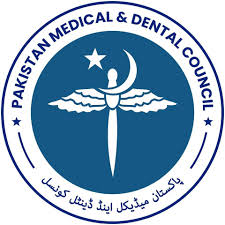Pulmonary Embolism: Diagnostic Approach, Clinical Findings, and the Alarming Rise in Incidence – A Critical Review
DOI:
https://doi.org/10.37018/JFJMU/AI/2990Keywords:
Pulmonary embolism, Venous thromboembolism, Anticoagulation, Post-PE syndromeAbstract
Background: Pulmonary embolism (PE) is a potentially life-threatening condition resulting from the obstruction of pulmonary arteries, most commonly by thrombi originating from the deep veins of the lower limbs. In recent years, a notable rise in PE incidence has been observed globally, attributed to both improved detection and an increase in predisposing risk factors.
Objective: To provide a comprehensive overview of the evolving epidemiology, diagnostic approach, clinical features, therapeutic options, and long-term outcomes of PE, with emphasis on the critical rise in incidence and implications for clinical practice.
Methods: A narrative review was conducted using recent peer-reviewed literature and guideline-based recommendations. Studies were selected from indexed databases focusing on diagnostic algorithms, imaging modalities, treatment outcomes, and epidemiological trends related to acute PE.
Results: PE incidence is increasing globally, driven by aging populations, cancer survivorship, and postoperative complications. Clinical presentation varies widely, often mimicking other cardiopulmonary conditions, making early diagnosis challenging. Risk stratification tools such as the Wells score, revised Geneva score, and Pulmonary Embolism Severity Index (PESI) are critical in guiding the use of D-dimer testing and imaging. Computed tomography pulmonary angiography (CTPA) remains the diagnostic gold standard. Treatment strategies are guided by risk categories—ranging from anticoagulation alone in low-risk cases to thrombolysis or surgical embolectomy in high-risk cases. Long-term complications such as chronic thromboembolic pulmonary hypertension (CTEPH) and post-PE syndrome significantly impact quality of life, underscoring the importance of follow-up and rehabilitation.
Conclusion: The increasing incidence and variable presentation of PE demand heightened clinical vigilance. Early risk-adapted diagnosis and intervention are pivotal in reducing mortality and morbidity. Long-term monitoring and individualized therapy are essential for improving patient outcomes. Future strategies should emphasize prevention, early detection, and research into novel diagnostic and therapeutic tools.
Downloads
Published
How to Cite
Issue
Section
License
The Journal of Fatima Jinnah Medical University follows the Attribution Creative Commons-Non commercial (CC BY-NC) license which allows the users to copy and redistribute the material in any medium or format, remix, transform and build upon the material. The users must give credit to the source and indicate, provide a link to the license, and indicate if changes were made. However, the CC By-NC license restricts the use of material for commercial purposes. For further details about the license please check the Creative Commons website. The editorial board of JFJMU strives hard for the authenticity and accuracy of the material published in the journal. However, findings and statements are views of the authors and do not necessarily represent views of the Editorial Board.

















